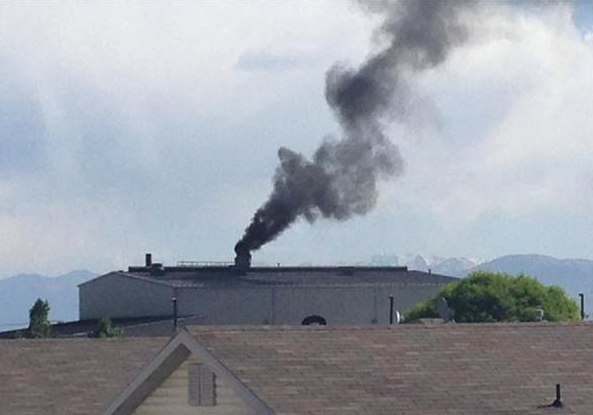Stericycle

You may read UPHE’s indepth, thoroughly researched report on Stericycle here. A shorter summary of the issue is below.
Stericycle imports and burns waste from eight surrounding states, making Utah a pollution dumping ground with no off setting benefit realized by our community. As those communities have become cleaner, Salt Lake has become dirtier.
During start-ups, shut downs and “upset” conditions, an incinerator completely bypasses their pollution control equipment, emitting raw, contaminated smoke. Studies of the industry show that these conditions exist about 10% of the time, and during these conditions the amount of dioxins released can equal two years worth of emissions found during “normal” conditions. A dramatic video of a recent Stericycle “upset” can be seen here.
Small, even brief exposures to toxins like those from Stericycle, can have profound, life long impacts if the exposure occurs during critical stages of fetal development.
No Need For Incineration
there is no law requiring incineration, including medical waste. 98% of the nation’s medical waste incinerators in the nation have been closed in the last 15 years. The only reason to treat medical waste any differently than landfill waste is to neutralize pathogens. Not all pathogens can be eliminated, but steam auto-claving and burial is just as effective as incineration in eliminating those pathogens that can be eliminated. There are better alternatives to incineration available right now. Several countries, states and cities have banned medical waste incineration.
Incineration Spreads Disease
Incineration does not remove toxins and actually creates new ones by merely concentrating and redistributes existing ones. Emissions from incinerators are probably the most toxic type of air pollution and include the deadliest compounds known to science; dioxins, furans, heavy metals, radioactive elements and even prions (the highly infective proteins that cause the 100% fatal human “Mad Cow”disease). Because incinerator emissions contain these deadly toxins, large medical studies show increased rates of serious diseases–like cancer, pregnancy complications, birth defects, and autism–among people who live within several miles of incinerators.
Utah has the highest rates of autism in the nation, double the national average. Wide spread suspicion in Foxboro, the closest subdivision to Stericycle, that there were high rates of serious diseases including cancer, is what prompted the residents to contact the Utah Physicians for a Healthy Environment for help. The state has not done any studies to explore the issue. This is not just a one neighborhood issue. Emissions from incinerators can travel hundreds of miles. Residents throughout Salt Lake, Davis, Utah, and Weber Counties are undoubtedly being affected.
Criminal Investigation
Stericycle is under criminal investigation by the state and federal government for emitting hundreds of times more dioxins and furans than their permit allows (dioxins are considered the second most toxic man-made substance after plutonium), falsifying their records, and packing their incinerator with atypical waste to cheat on their stack tests. Even the best managed incinerators are a health hazard, but Stericycle is more like “worst managed.”
Public Health Issue
The Governor has the executive authority to close down Stericycle in the name of public health protection under state statute 19-2-112. He needs to exercise that authority now. UPHE participated in a townhall meeting in North Salt Lake. Comments expressed by UPHE members are published below.
